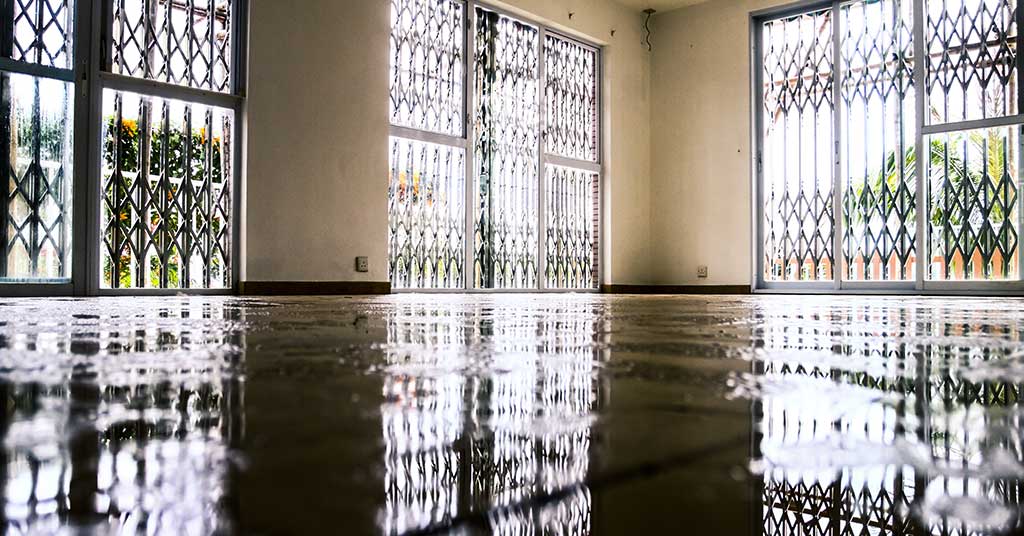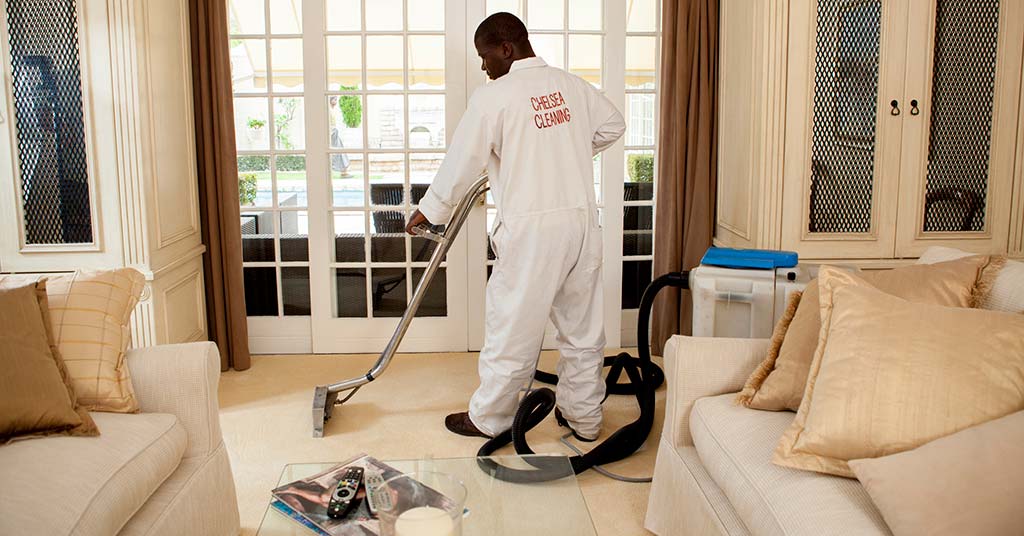
The geyser has burst, your washing machine has overflowed or rain has poured in through a broken roof tile… Unfortunately, these are all fairly common occurrences.
If the leaked water is restricted to hard floor areas, it’s really no sweat. But when carpeting is involved, it’s important to respond correctly, and quickly, to minimise the damage. Otherwise water may seep through and under the carpet, causing permanent damage and encouraging the growth of mould and mildew.
Mop up
After switching off and unplugging any appliances, your first task is to remove excess water. You’ll have to move the furniture to do a proper job.
Get hold of a wet and dry vacuum if you can, or mop up the water with a sponge, cloth or squeegee. Pay special attention to all the nooks and crannies, as this is exactly where mould and mildew will flourish.
Dry
Once you’ve got most of the water off your carpet and into the drain, it’s time for the drying phase. Borrow as many adjustable fans as you can and position them around the room. Provided it’s not teeming with rain, open windows and doors to get the air circulating.
You can expedite the process by hiring an industrial-strength carpet dryer and a dehumidifier. If, however, the carpet remains sopping wet, it’s time to consider a more radical approach.
Lift
A thick carpet is obviously more difficult to dry. The longer it stays wet, the more likely the latex adhesive holding the primary and secondary backings together will erode, and eventually break down. This can lead to unsightly ruts and bubbles in the carpet that are almost impossible to remove.
Your best bet is to start in one corner of the room, lift the carpet from the tacks and systematically dry with the dryer, lifting another portion as you go along the length of the floor. You will have to remove and discard the padding, but it’s a lot cheaper than replacing the entire carpet.
Re-fit & steam clean
Once the carpet is totally dry, you can get it professionally stretched and refitted, so that it looks as good as new. We recommend you allow the carpet to stand for at least a week before calling the professional carpet cleaning service you’ve had on speed dial, for a deep and refreshing steam clean.
Moisture is mould’s best friend
Considering the amount of water that was lying around, and the time and effort spent in getting it dry, you may be wondering why the carpet needs a steam clean. One word: mould.
Mould grows on any, even slightly, damp surface within 24 hours. It thrives in dark, dank areas, like under the carpet or deep in carpet pile. If you leave mould or mildew, it can quickly colonise an entire room, sending spores up into the air.
As well as causing an unpleasant odour, mould and mildew can cause respiratory problems, allergies and infections.
Call in the professionals
At Chelsea Cleaning, we offer professional, affordable, deep cleaning of all types of fitted and loose carpets and rugs. Our industrial steam-cleaning process is designed to destroy mould, tackle stubborn stains and leave carpets fresh and hygienically clean.




